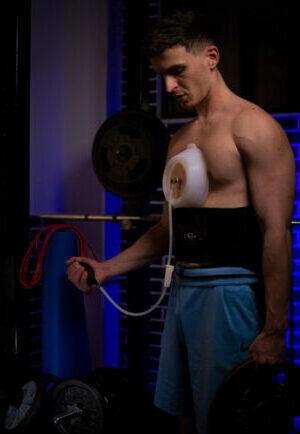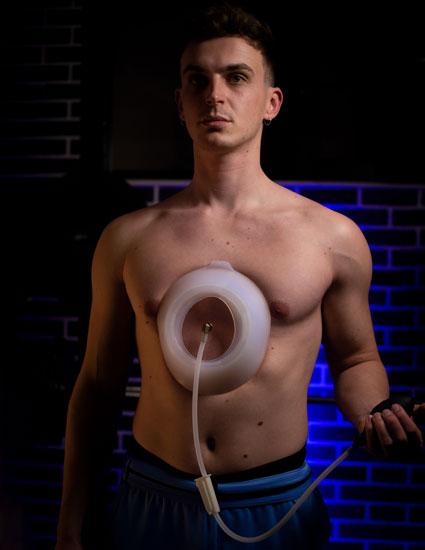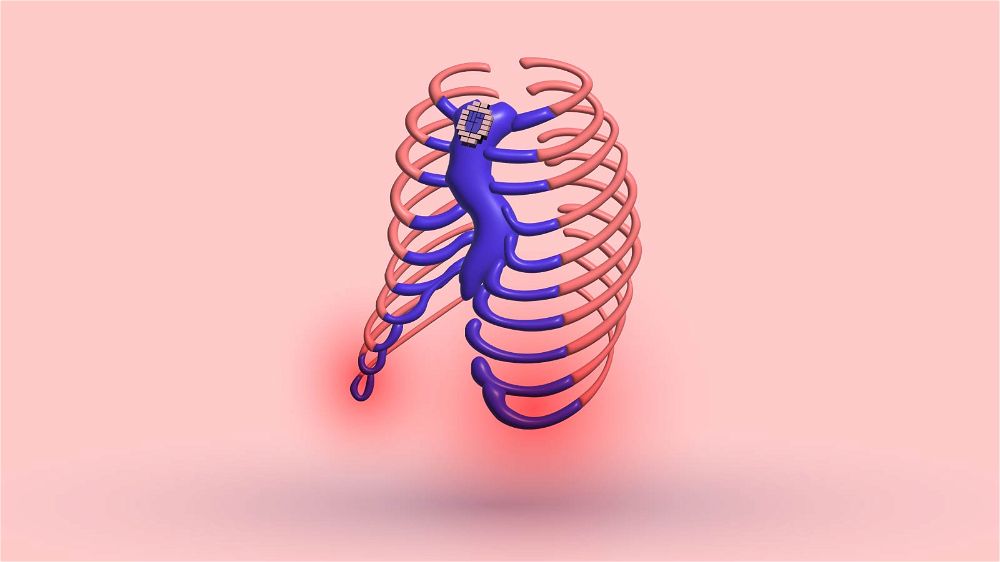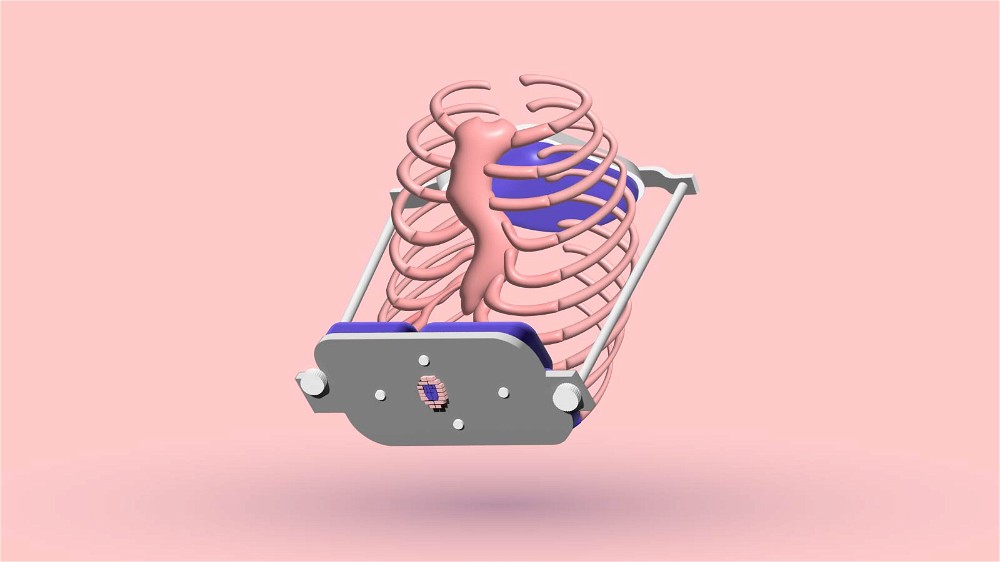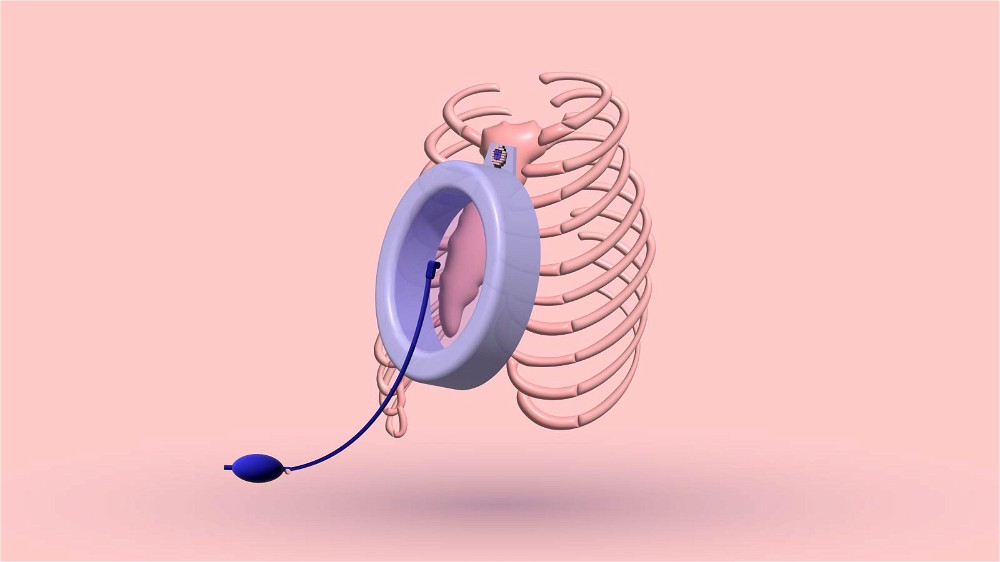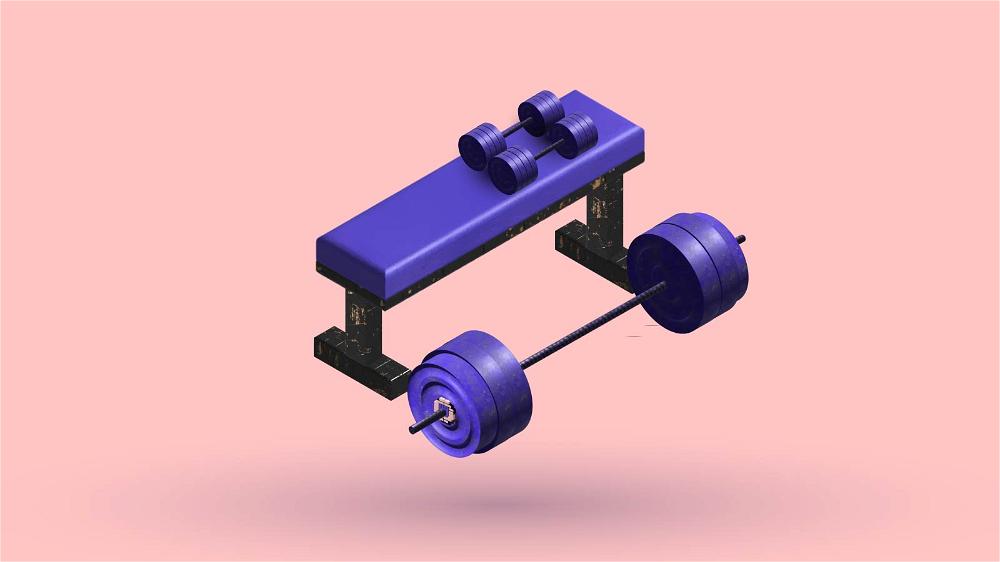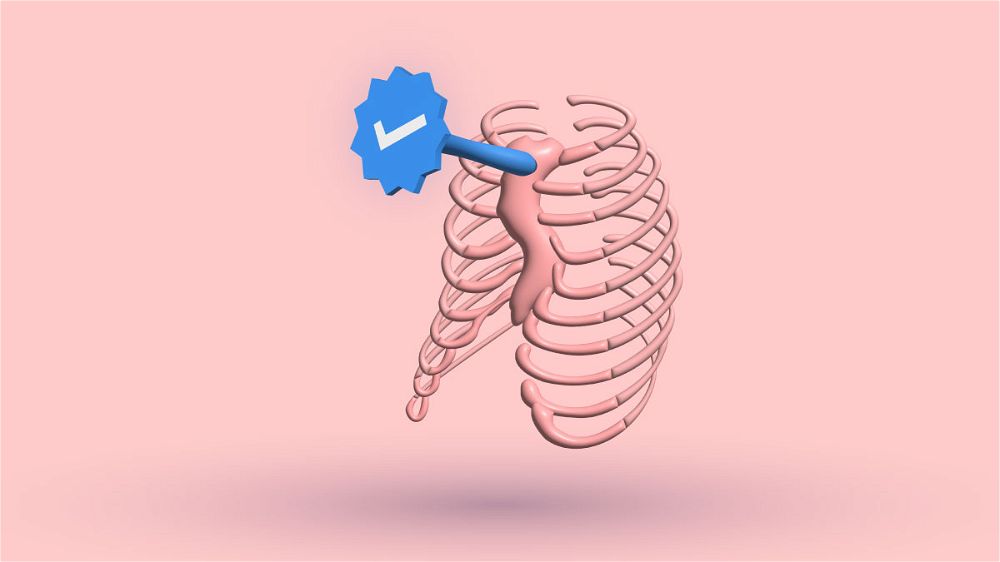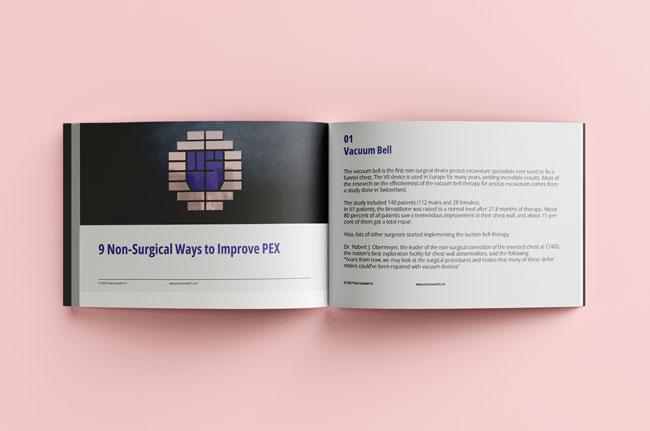If you are one dog lover or owner, you may know that dogs have similar health problems as humans.
One shared problem in dogs and humans is pectus carinatum.
I feel that more and more people are deciding to adopt a pet. That gives us hope that the world is starting to be a better place. Treating animals right has a positive impact on Earth. But, knowing how to treat them right is a big part of aminal parenting.
Introduction
Pectus carinatum affects the anterior chest wall in dogs.
Pectus excavatum and pectus carinatum are two different common deformities in dogs.
Pectus carinatum is characterized by protruding the sternum and the surrounding costal cartilage. It's an inherent condition that affects the thoracic wall, producing respiratory discomfort in dogs.
14 Possible Symptoms of Pectus Carinatum in Dogs
Here is an easy way of discovering something wrong with your dog's chest.
- A bump or a point on the chest
- Outwardly bowed chest
- Walking is difficult
- Breathing problems
- Legs that hurt
- An umbilical hernia
- Dental issues
- Loss of appetite
- Wheezing
- Vomiting
- Loss of weight
- Problems with digestion
- Skin and mucous membranes have a blue hue (cyanosis)
- Depression
Please bring your dog to the veterinarian if you are unclear about what to look for.
Shih-Tzu's Protruding Chest Study
A lot of research about pectus carinatum is on Shih-Tzu puppy dogs. A two-month-old male Shih-Tzu canine was at the veterinary hospital in the study. In the early days of his existence, the animal had trouble breathing.
The owner noted an anomaly in the thoracic area. Neither of the parents had any congenital abnormalities. The dog ate and drank regularly and had an active temperament.
He also had one dosage of vaccination and one dose of anthelmintic medication. All physiological indicators were okay during the clinical evaluation. During palpation, however, swelling in the ventral thoracic area was discovered. The dog had pectus carinatum.
A chest radiograph was requested, revealing a significant ventral protrusion of the sternum.
Another Study on Male Pinscher
A five-month-old male Miniature Pinscher was brought to the Veterinary Hospital of the Universidade Estadual do Norte Fluminense to evaluate various congenital abnormalities.
The dog's owner had adopted it four months prior.
They discovered a few anomalies in the dog and a chest deformity.
The other abnormalities were:
- A poor tooth occlusion in the dog.
- Significant limb angulations with ambulation issues.
- Scrotal testicles were missing.
- An umbilical hernia.
When running, the dog was also said to fatigue rapidly and have respiratory problems. Since the new owner took over, the limb abnormalities have become less severe.
This dog also had a heart rate of 126 beats per minute, a respiratory rate of 11 breaths per minute, a rectal temperature of 39 degrees Celsius, a weight of two kilos, a normal heart and lung rate auscultation, and good overall health and demeanor.
The dog was advised to be kept in a place with a hard surface and subjected to regular brief walks on a sandy floor to reduce walking problems.
Under anesthesia, a compressive splint was placed dorsally to the dog's sternum. As a consequence of compression, the dog became dyspneic and cyanotic. Removing the splint and a face mask to provide oxygen is a must in this case.
After removing the brace and administering oxygen, the cyanosis and dyspnea were gone in a matter of minutes. Because of these findings, it was determined that the thoracic splint would not be used.
The dog was in good general health during post-operative revision and suture removal, and the owner was happy with the treatments.
The non-operative pectus carinatum is a safe, effective, and less expensive therapy than surgery. In most cases, a consanguineous cross mating might be the source of congenital illnesses, including chest deformity.
Diagnosis
Because there is a good physical examination and confirmation by imaging studies, diagnosing pectus carinatum is clinical and very easy. So, if you notice anything similar in your dog, call your veterinarian as soon as possible.
These examples help a lot, especially when you are not 100% sure that there is something off with your pet.
Detection of pectus carinatum may go unnoticed in asymptomatic or long-haired animals. That is why their breathing problems are the only indicator of something wrong.
Because many pet owners are unfamiliar with this uncommon deformity, it is usually diagnosed with dyspnea (shortness of breath).
Progressive
The deformity is progressive and accompanied by cardiac and respiratory signs, which may or may not be present in many cases. That's because the animals are in good general condition and have no physical abnormalities elsewhere.
The veterinarian recommends applying a compressive bandage to the chest area during the dog's growing stage. It may be difficult for the dog to wear, but you must insist on it.
Long Walks
Intensive activities and long walks are other good ways to notice signs of pectus carinatum in your dog. In these cases, you may recognize dyspnea in your dog.
The animal's ventral thoracic area may get swollen when it is tired. After a chest scan, a dog with pectus carinatum reveals significant ventral protrusion of the distal portion of the sternum.
The cause of pectus carinatum has yet to be determined, but veterinary thinks it is acquired genetically. The dog may or may not have a history of inbreeding between the parents or prior litter puppies showing similar abnormalities.
Which Dogs Are Expected to Have Pectus Carinatum?
There is a potential racial predisposition with brachycephalic dogs. Dogs with a screw tail have a higher risk of pectus carinatum, with Pugs being one of the breeds most at risk.
Conservative treatments without surgical intervention are necessary during the development phase of pectus carinatum.
Treatments are not for dogs that exhibit no associated clinical symptoms. Using a compressive splint causes side effects such as cyanosis and dyspnea, requiring its removal.
Researchers say that pectus carinatum occurs more in female dogs. So, be careful and notice every difference in your dog's behavior in time.
Parents Medical History
It's a good idea to provide your veterinarian with a thorough medical history of the puppy's mother and father and any diseases they may have had.
Your puppy will be examined thoroughly by the veterinarian to establish the malformation level and whether it is causing the symptoms, you have mentioned.
Although your veterinarian can generally tell by looking at your puppy, he will need to do tests to be sure.
Tests to Analyze Pectus Carinatum in Dogs
I've purposefully selected a few tests to help you better understand your dog's veterinarian in your pet's diagnosis.
- A complete blood count (CBC)
- The volume of a packed cell
- Chemical panel and blood gas analysis
- Glucose testing
- Urinalysis
- Chest and digital abdomen radiography (x-rays)
- An echocardiogram is a test that examines the heart (ECG)
Initial Early Diagnosis
Noticing wrong physical behavior in your pet's day-to-day activities is the key to early diagnosis.
The previous analysis methods aided in diagnosing pectus carinatum cases in dogs and thoracic X-rays to establish pectus deformities.
Treatment
Your veterinarian's treatment plan for your puppy indicates the type of chest bone defect the dog has and how serious it is.
There is no need for therapy if the deformity is minor and does not compress internal organs, such as the lungs or heart. The vet will keep an eye on your puppy to ensure that the lungs and the heart function normally.
Corrective splints are a proper replacement if the deformity is not severe enough for surgery.
New Treatment
Surgical treatment removes the distorted portion of the chest bone and replaces it with a fiberglass cast.
You will construct the cast by fitting it to your puppy's chest and then suturing it to his sternum. This procedure is generally new. It is performed on puppies older than three months with a more severe malformation.
Whether your puppy undergoes surgery or not, physical rehabilitation is typically required. Because this type of malformation can improve with physical therapy, the veterinarian may advise you to attempt that for a few months before considering splints or surgery.
If the veterinarian detects an infection, they will give your dog antibiotics and pain relievers.
Following your veterinarian's recommendations and bringing your puppy back for check-ups is a vital component of any therapy.
You have to be patient throughout this process.
It may be difficult and time-consuming, but you probably understand that your dog needs your love and care.
If your pet has had surgery, ensuring a peaceful area to relax is crucial for its healing process. Every therapy has a risk of adverse effects.
As a result, the only option is to visit your veterinarian frequently.
The Bottom Line
I've gone over the essential things you must consider if your dog has a pectus carinatum malformation.
If you detect a bone anomaly, please don't wait to contact your dog's veterinarian. Letting your dog suffer and have a miserable life is not a humane option.
The pectus carinatum deformity may shorten the dog's life expectancy.
And, as usual, I encourage you to share your pet story with other pet owners with similar problems. All information about pectus deformities is helpful because there is a lack of information about the subject online, especially about pets.
Let's help each other! Thank you for reading!
2 Sources
- Martins DB, Rietjens LH, Petrochi D. Pectus carinatum in a dog. Acta Scientiae Veterinariae. 2014 Jan 1;42.
- Souza DB, Andrade Júnior PSC, Mariano CMA, Costa FS, Abílio EJ. Pectus carinatum in a dog. Arq Bras Med Vet Zootec. 2009 Feb;61:276–9.


